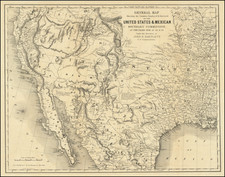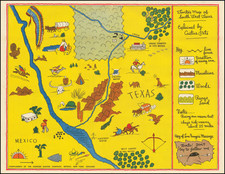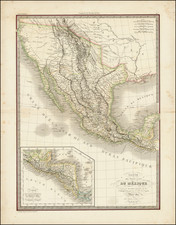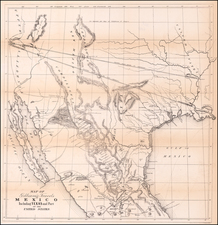Rare Wall Map of Texas Issued By The Texas Railroad Commission
Scarce map of Texas, published by the Railroad Commission of Texas in 1912.
The map presents a detailed large format map of the state, emphasizing the railroad lines operating in Texas, along with towns, rivers, forts and other details.
At the bottom left, the map gives 8 color codes for the different rail lines shown, all but one of which include multiple companies.
The map was issued just a few years before the Commission began regulating Oil and Gas in Texas.
Railroad Commission of Texas
The Railroad Commission of Texas is the state agency that regulates the oil and gas industry, gas utilities, pipeline safety, safety in the liquefied petroleum gas industry, and surface coal and uranium mining. Despite its name, it ceased regulating railroads in 2005.
Established by the Texas Legislature in 1891, it is the state's oldest regulatory agency and began as part of the Efficiency Movement of the Progressive Era. From the 1930s to the 1960s it largely set world oil prices, but was displaced by OPEC (Organization of Petroleum Exporting Countries) after 1973.
Attempts to establish a railroad commission in Texas began in 1876. After five legislative failures, an amendment to the state constitution providing for a railroad commission was submitted to voters in 1890. The amendment's ratification and the 1890 election of Governor James S. Hogg, a liberal Democrat, permitted the legislature in 1894 to create the Railroad Commission, giving it jurisdiction over operations of railroads, terminals, wharves, and express companies. The commission could set rates, issue rules on how to classify freight, require adequate railroad reports, and prohibit and punish discrimination and extortion by corporations.
George Clark, running as an independent "Jeffersonian Democratic" candidate for governor in 1892, denounced the Commission as,
Wrong in principle, undemocratic, and unrepublican Commissions do no good. They do harm. Their only function is to harass. I regard it as essentially foolish and essentially vicious.
Clark lost the 1892 election to Hogg but a federal judge ruled the Commission illegal, a ruling later overruled by the United States Supreme Court. The governor appointed the first members; the first elections to the commission were held in 1893, with three commissioners serving six-year, overlapping terms.
The Commissions reach expanded as it took over responsibility for regulating oil pipelines (in 1917), oil and gas production (1919), natural gas delivery systems (1920), bus lines (1927), and trucking (1929). It grew from 12 employees in 1916 to 69 in 1930 and 566 in 1939. It does not have jurisdiction over investor owned electric utility companies; that falls under the jurisdiction of the Public Utility Commission of Texas.
Rarity
The map is apparently very rare. We were unable to locate any other examples of the 1912 edition of the map.
The Star of the Republic Museum holds a copy of the 1910 edition.
The Texas State archives holds copies of the map dated circa 1890, 1893, 1901, 1903, 1905, 1906, 1908, 1912-13, 1914, 1915, 1919 and 1921.












![(Texas and California) The Whig Almanac and United States Register for 1843 [bound with:] The Whig Almanac and Politicians' Register for 1845 [bound with:] The Whig Almanac, and Politicians' Register for 1846 [with maps of Texas and Oregon] [bound with:] The Whig Almanac: 1847.](https://storage.googleapis.com/raremaps/img/small/87041.jpg)



